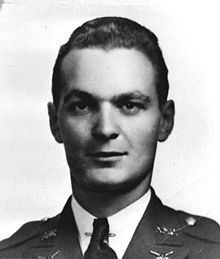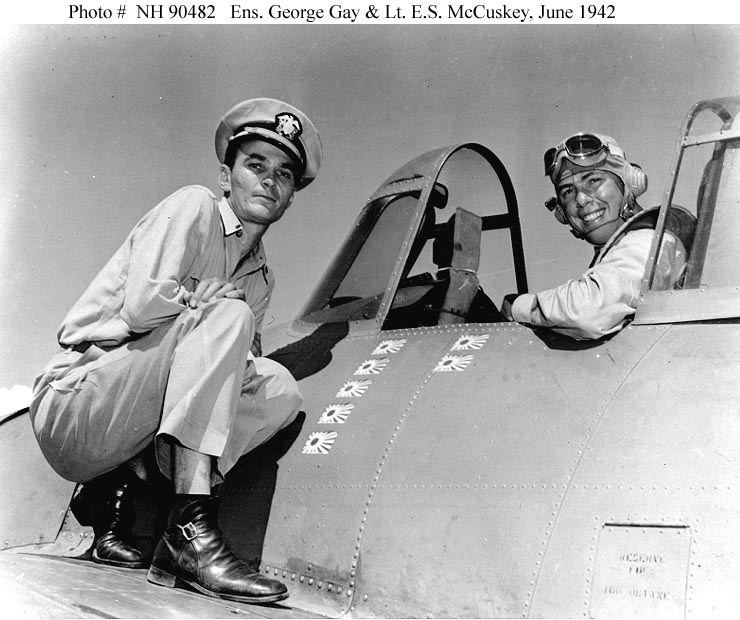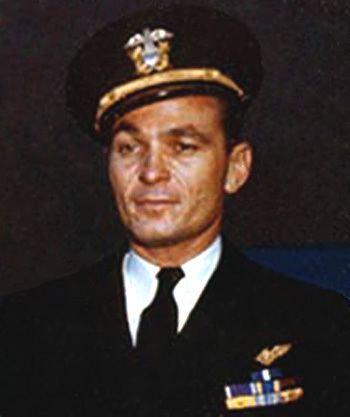Education Texas A&M University | Role Jr. Name George Gay, Books Sole survivor | |
 | ||
Born March 8, 1917Waco, Texas ( 1917-03-08 ) Allegiance United States of America Battles/wars World War IIBattle of MidwayGuadalcanal Campaign Battles and wars Battle of Midway, Guadalcanal Campaign, World War II | ||
Ensign (later Lieutenant Commander) George Henry Gay Jr. (March 8, 1917 – October 21, 1994) was a TBD Devastator pilot in United States Navy Torpedo Squadron 8 operating from the USS Hornet (CV-8) in the Pacific Theater of Operations during World War II. Of the 30 VT-8 aircrew from Hornet that participated in the pivotal Battle of Midway, Ensign Gay was the sole survivor.
Contents

Early years

George Henry Gay Jr. was born on March 8, 1917 in Waco, Texas. He attended school in both Austin and Houston before enrolling at the Agricultural and Mechanical College of Texas (now Texas A&M University).
World War II

Like millions of Americans at the time, Gay chose to sign up for the coming war, leaving Texas A&M University. He tried to join the Army Air Corps as a pilot but was rejected for medical reasons. He then tried the United States Navy in early 1941. Gay completed flight training and was commissioned as an Ensign in Sept 1941.

He joined the newly formed Torpedo Squadron 8 under Lieutenant Commander John Charles Waldron. He and his unit were aboard the USS Hornet in April 1942 when Lieutenant Colonel Jimmy Doolittle launched his raid on Tokyo. One week later, the Hornet arrived at Pearl Harbor to join the USS Enterprise as part of Task Force 16 during the Battle of Midway.
During the Battle of Midway Gay was the first of his squadron to take off from Hornet on June 4, 1942. Gay's unit found the Japanese carrier fleet and launched an attack without any fighter plane support. Although he was wounded and his radioman/gunner, Robert K. Huntington, was dying, Gay completed his torpedo attack on the Japanese aircraft carrier Kaga, but the Kaga evaded his torpedo. Rather than banking away from the ship and presenting a larger target to its anti-aircraft gunners, Gay continued in toward the carrier at low altitude. He then brought his Devastator into a tight turn as he approached the carrier's island, and flew aft along the flight deck's length, thus evading anti-aircraft fire. He later stated he had a "split second" thought of crashing into the Japanese aircraft he saw being serviced on the flight deck.
It's when a fellow is just gone and knows it, it is just crash into the ship or crash into the sea, and you have enough control to do a little bit more damage, why you crash into the ship.
His plane still in relatively good condition, he decided to make for the Hornet after clearing the Japanese carrier. However, five A6M Zeros brought his aircraft down in a hail of machine gun and cannon fire, killing his rear gunner. Exiting his aircraft, and floating in the ocean, he hid under his seat cushion to avoid Japanese strafing attacks and witnessed the subsequent dive bombing attacks and sinking of three of the four Japanese aircraft carriers present.
After dark, Gay felt it was safe to inflate his life raft. He was rescued by a Navy PBY after spending over 30 hours in the water. Gay was later flown to the USS Vincennes (arriving June 28, 1942), before being transferred home. Of the squadron's thirty pilots and radiomen, Gay was the only survivor. Gay met with Admiral Nimitz and confirmed the destruction of three Japanese carriers that he had witnessed – the Akagi, Kaga and Soryu. He was featured in the August 31, 1942 issue of Life magazine.
Following Midway, Gay took part in the Guadalcanal Campaign with Torpedo Squadron 11, and he later became a Navy flight instructor. He was awarded the Navy Cross, Purple Heart and Presidential Unit Citation for his actions in combat at Midway. He was also later awarded the Air Medal.
Later years
After World War II, Gay spent over 30 years as a pilot for Trans-World Airlines. He often lectured on his Midway experiences, and authored the book Sole Survivor. In 1975, he served as a consultant on the set for the movie Midway, in which Kevin Dobson played Gay. He attended the decommissioning ceremony of the USS Midway on April 11, 1992.
On October 21, 1994, Gay died of a heart attack at a hospital in Marietta, Georgia. His body was cremated and his ashes spread at the place that his squadron had launched its ill-fated attack.
Awards
Naval Aviator Badge
